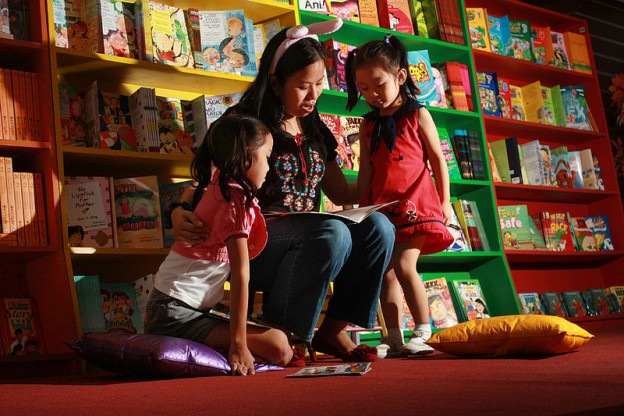
Resources
Five strategies to use when reading a picture book to a child with special needs.
For many children with special needs, book reading can be a passive activity due to a variety of reasons (.e.g. cognitive delays, speech and language deficits, motor issues, etc.). Many times children with special needs are not given the same opportunities for participation during book reading as their typical peers. Here are five strategies to use at home or in the classroom to help facilitate participation during book reading time.1. Use Visuals and manipulatives
For example, you can add pictures within a story of key vocabulary (for example when reading The Very Hungry Caterpillar , have pictures printed of caterpillar, apple, orange, etc.). Pictures can be taken by you, found online or created with software (such as Boardmaker, Connect Ability, etc.). Manipulatives can include objects that make the story more real or concrete. For example, when I recently read Curious George Makes Maple Syrup I used a maple syrup bottle and a piece of bark as my manipulatives and printed out a picture of a maple leaf. Do not use too many manipulatives, as it may become distracting and overwhelming. Stick with some simple manipulatives that you can use throughout the story. Another way to incorporate manipulatives is to use a felt board with felt pieces. You can also create your own felt pieces or purchase already made ones at Lakeshore Learning.2. Ask questions, give choices, encourage creative thoughts
When reading a picture book, ask “wh” questions according to your child’s level. For example, for a child with significant cognitive challenges, you may begin with more simple questions and increase the complexity. If your child has trouble answering the questions, give them choices, such as “Did Curious George make maple syrup or jam in the story?” If your child still has difficulty, show them the page and ask yes/no questions. Give lots of positive reinforcement and celebrate the successes. A child shouldn’t feel like it’s a testing period, instead a time of bonding and learning. Reading can be an active and engaging activity given the correct prompts. I recently read a wonderful post on PrAACtical AAC website about building communication during book reading with children who are minimally verbal or nonverbal. Within this article, are links to communication boards which can be helpful for a child who is nonverbal or minimally verbal.3. Choose books that are age and cognitively appropriate
I often tell my graduate students that developmental age does not indicate what types of books you should choose for a child. If a child is functioning cognitively at a 2 year old level, but their chronological age is 10, choose a book for a 10 year old and adapt it for their needs. Give choices and ask your child what book they want to read. Motivation and interest are key!4. Use varying intonation and expression when reading
I recently wrote a post about using expression during reading based on a research article that I reviewed here. Studies have shown that using expression during reading improves a child’s ability to comprehend the story better and answer questions more accurately about the story. Recently I read The Frog Prince to both my children. The story was a little complex for my 4 year old son, so I used a lot of expression and sounds when reading so that he could understood the story better and keep him engaged.5. Relate the story to a child’s experience and tackle carryover activities
Relating the story to a child’s experience make them understand the story better. For example, when reading Betty Bunny Wants Everything to my children, we discussed how they feel when shopping in the toy store. I asked them, did you ever feel like you wanted everything at the toy store? Most children can relate to that! Visit a toy store and discuss the story. This carryover activity can help a child recall information and work on sequencing and narrative skills. Additionally, there are many children’s books out there that are created for children with special needs. If your child has a specific diagnosis, it might be helpful to read a book about that disorder.For a child with...
- ADHD reading a book such as: Mrs. Gorski, I Think I Have the Wiggle Fidgits can be comforting and provide some useful strategies for a child and parent.
- Epilepsy, reading a book like The Great Katie Kate Explains Epilepsy can help calm fears and anxiety.
- Sensory processing disorders, I found It’s Haircut Time, Sensitive Sam and Picky Picky Pete excellent books to read.
I hope you find these strategies helpful, please comment with your own!


